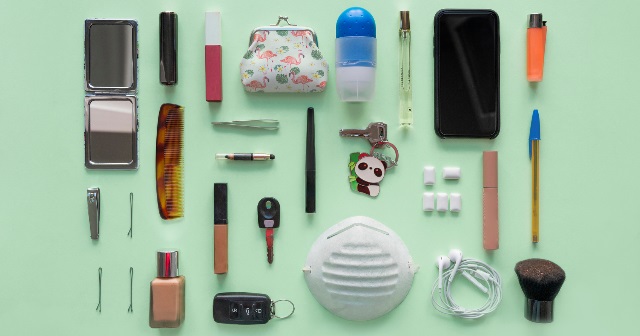Survival kits are crucial for everyone. Whether you’re an outdoor enthusiast, a hiker, hunter, or just someone living in an area prone to natural disasters, having the right equipment can make all the difference. However, not all survival kits are made equal, and it’s critical to have the right items and know-how to use them. In this article, we’ll discuss the key considerations for building a survival kit and highlight the must-have items to include.
Having a survival kit is not just about having the right equipment, but also knowing how to use them effectively. It’s important to familiarize yourself with your survival kit and practice using its contents before an emergency situation arises. This will ensure that you are well-prepared and able to handle any challenges that may come your way.
Whether you’re an avid outdoors person or simply want to prepare for an emergency, a survival kit can be an essential item to have on hand. But what exactly should you include in your kit? From food and water to shelter and first aid, there are a variety of factors to consider when building your survival kit. In this article, we’ll break down the key considerations you should keep in mind and provide a list of must-have items to include in your kit.
Firstly, it’s essential to choose the right container for your survival kit. The container should be rugged, waterproof, and easy to carry; it should be able to withstand any environmental condition. A good choice would be a backpack because it allows you to carry several items, fits well on your back, and easy to continuously adjust. The first thing you should consider when building your survival kit is the location and environment you’ll be in. Are you heading into the wilderness or preparing for an urban emergency? Will you be in a cold weather or hot weather environment? These factors will influence the types of items you need to include in your kit. For example, if you’ll be in a cold weather environment, you’ll need to include extra warm clothing, blankets, and fire-starting supplies.
Secondly, the primary consideration while building your survival kit is to ensure that you have enough food, water, and shelter. Depending on where you are going and the duration of your trip, the recommended amount of water is 1 liter per person per day. However, if you’re in an area with limited access to water, a water filtration system or water purification tablets are critical. Food should be non-perishable, lightweight, and preferably something that requires no cooking and can be eaten on the go. When building your survival kit, you should also consider your personal needs. Do you have any health conditions or medications you need to bring with you? Do you have a family member with specific needs, such as a baby or a pet? These considerations will help you tailor your kit to your specific needs.
The length of time you’ll need to survive without access to resources is another important consideration. Will you only need to survive a few days, or are you preparing for a longer-term emergency? The length of time will impact the amount of food, water, and other supplies you need to include in your kit.
Thirdly, in case anyone gets sick or injured, a first aid kit is a must-have. Your first aid kit should include essentials such as adhesive bandages, antiseptic wipes, gauze, and antibiotic ointments. If you’re traveling in an area with venomous animals, pressure immobilization bandages and a snakebite kit would be essential. A comprehensive first aid kit should include items such as bandages, wound dressings, antiseptic wipes, and pain relievers.
Fourthly, communication devices are crucial to have in your survival kit, especially when traveling alone or in places with a weak signal or no signal at all. A cell phone with a spare battery, a two-way radio, or a satellite phone can be life-saving in situations where calling for help is necessary.
Fifthly, fire is critical in a survival situation. You should have at least two or three fire-starting devices in your kit. Lighters, waterproof matches, and fire starters are recommended. You can also include a small can of petroleum jelly that burns like hell and can be used to start a fire in the wettest conditions. Matches, a lighter, and waterproof tinder (such as cotton balls soaked in petroleum jelly) will help you start a fire in a variety of conditions.
Other essential items you should include in your kit are a multi-tool or survival knife, a map and compass, a flashlight, extra batteries, an emergency blanket, a signaling mirror, and a whistle. A multi-tool can be a versatile and useful item to have on hand.
Conclusion:
A well-assembled survival kit should include essential items that are durable, reliable, and multifunctional. Whether you’re planning a day hike or an extended trip, packing the right gear can mean the difference between surviving in an emergency and not. In summary, here are the must-have items for your survival kit: a rugged container, water filtration system or water purification tablets, non-perishable food, a first aid kit, communication devices, fire-starting tools, a multi-tool or survival knife, a map and compass, a flashlight, extra batteries, an emergency blanket, a signaling mirror, and a whistle. Remember to keep your survival kit up-to-date, replacing any outdated food, removing broken items, and upgrading your gear as necessary. With the right mindset and the right tools, you can be prepared for whatever comes your way.
Building a survival kit can seem like a daunting task, but by keeping these key considerations in mind and including must-have items such as water, food, first aid supplies, and emergency shelter, you can ensure that you’re ready to face any emergency situation that comes your way. Remember that preparing now can make all the difference in ensuring your safety and survival in the future.

